- Home
- Stephen Hawking
A Brief History of Time Page 3
A Brief History of Time Read online
Page 3
The lack of an absolute standard of rest meant that one could not determine whether two events that took place at different times occurred in the same position in space. For example, suppose our Ping-Pong ball on the train bounces straight up and down, hitting the table twice on the same spot one second apart. To someone on the track, the two bounces would seem to take place about forty meters apart, because the train would have traveled that far down the track between the bounces. The nonexistence of absolute rest therefore meant that one could not give an event an absolute position in space, as Aristotle had believed. The positions of events and the distances between them would be different for a person on the train and one on the track, and there would be no reason to prefer one person’s position to the other’s.
Newton was very worried by this lack of absolute position, or absolute space, as it was called, because it did not accord with his idea of an absolute God. In fact, he refused to accept lack of absolute space, even though it was implied by his laws. He was severely criticized for this irrational belief by many people, most notably by Bishop Berkeley, a philosopher who believed that all material objects and space and time are an illusion. When the famous Dr. Johnson was told of Berkeley’s opinion, he cried, “I refute it thus!” and stubbed his toe on a large stone.
Both Aristotle and Newton believed in absolute time. That is, they believed that one could unambiguously measure the interval of time between two events, and that this time would be the same whoever measured it, provided they used a good clock. Time was completely separate from and independent of space. This is what most people would take to be the commonsense view. However, we have had to change our ideas about space and time. Although our apparently commonsense notions work well when dealing with things like apples, or planets that travel comparatively slowly, they don’t work at all for things moving at or near the speed of light.
The fact that light travels at a finite, but very high, speed was first discovered in 1676 by the Danish astronomer Ole Christensen Roemer. He observed that the times at which the moons of Jupiter appeared to pass behind Jupiter were not evenly spaced, as one would expect if the moons went round Jupiter at a constant rate. As the earth and Jupiter orbit around the sun, the distance between them varies. Roemer noticed that eclipses of Jupiter’s moons appeared later the farther we were from Jupiter. He argued that this was because the light from the moons took longer to reach us when we were farther away. His measurements of the variations in the distance of the earth from Jupiter were, however, not very accurate, and so his value for the speed of light was 140,000 miles per second, compared to the modern value of 186,000 miles per second. Nevertheless, Roemer’s achievement, in not only proving that light travels at a finite speed, but also in measuring that speed, was remarkable—coming as it did eleven years before Newton’s publication of Principia Mathematica.
A proper theory of the propagation of light didn’t come until 1865, when the British physicist James Clerk Maxwell succeeded in unifying the partial theories that up to then had been used to describe the forces of electricity and magnetism. Maxwell’s equations predicted that there could be wavelike disturbances in the combined electromagnetic field, and that these would travel at a fixed speed, like ripples on a pond. If the wavelength of these waves (the distance between one wave crest and the next) is a meter or more, they are what we now call radio waves. Shorter wavelengths are known as microwaves (a few centimeters) or infrared (more than a ten-thousandth of a centimeter). Visible light has a wavelength of between only forty and eighty millionths of a centimeter. Even shorter wavelengths are known as ultraviolet, X rays, and gamma rays.
Maxwell’s theory predicted that radio or light waves should travel at a certain fixed speed. But Newton’s theory had got rid of the idea of absolute rest, so if light was supposed to travel at a fixed speed, one would have to say what that fixed speed was to be measured relative to. It was therefore suggested that there was a substance called the “ether” that was present everywhere, even in “empty” space. Light waves should travel through the ether as sound waves travel through air, and their speed should therefore be relative to the ether. Different observers, moving relative to the ether, would see light coming toward them at different speeds, but light’s speed relative to the ether would remain fixed. In particular, as the earth was moving through the ether on its orbit round the sun, the speed of light measured in the direction of the earth’s motion through the ether (when we were moving toward the source of the light) should be higher than the speed of light at right angles to that motion (when we are not moving toward the source). In 1887 Albert Michelson (who later became the first American to receive the Nobel Prize for physics) and Edward Morley carried out a very careful experiment at the Case School of Applied Science in Cleveland. They compared the speed of light in the direction of the earth’s motion with that at right angles to the earth’s motion. To their great surprise, they found they were exactly the same!
Between 1887 and 1905 there were several attempts, most notably by the Dutch physicist Hendrik Lorentz, to explain the result of the Michelson-Morley experiment in terms of objects contracting and clocks slowing down when they moved through the ether. However, in a famous paper in 1905, a hitherto unknown clerk in the Swiss patent office, Albert Einstein, pointed out that the whole idea of an ether was unnecessary, providing one was willing to abandon the idea of absolute time. A similar point was made a few weeks later by a leading French mathematician, Henri Poincaré. Einstein’s arguments were closer to physics than those of Poincaré, who regarded this problem as mathematical. Einstein is usually given the credit for the new theory, but Poincaré is remembered by having his name attached to an important part of it.
The fundamental postulate of the theory of relativity, as it was called, was that the laws of science should be the same for all freely moving observers, no matter what their speed. This was true for Newton’s laws of motion, but now the idea was extended to include Maxwell’s theory and the speed of light: all observers should measure the same speed of light, no matter how fast they are moving. This simple idea has some remarkable consequences. Perhaps the best known are the equivalence of mass and energy, summed up in Einstein’s famous equation E=mc2 (where E is energy, m is mass, and c is the speed of light), and the law that nothing may travel faster than the speed of light. Because of the equivalence of energy and mass, the energy which an object has due to its motion will add to its mass. In other words, it will make it harder to increase its speed. This effect is only really significant for objects moving at speeds close to the speed of light. For example, at 10 percent of the speed of light an object’s mass is only 0.5 percent more than normal, while at 90 percent of the speed of light it would be more than twice its normal mass. As an object approaches the speed of light, its mass rises ever more quickly, so it takes more and more energy to speed it up further. It can in fact never reach the speed of light, because by then its mass would have become infinite, and by the equivalence of mass and energy, it would have taken an infinite amount of energy to get it there. For this reason, any normal object is forever confined by relativity to move at speeds slower than the speed of light. Only light, or other waves that have no intrinsic mass, can move at the speed of light.
An equally remarkable consequence of relativity is the way it has revolutionized our ideas of space and time. In Newton’s theory, if a pulse of light is sent from one place to another, different observers would agree on the time that the journey took (since time is absolute), but will not always agree on how far the light traveled (since space is not absolute). Since the speed of the light is just the distance it has traveled divided by the time it has taken, different observers would measure different speeds for the light. In relativity, on the other hand, all observers must agree on how fast light travels. They still, however, do not agree on the distance the light has traveled, so they must therefore now also disagree over the time it has taken. (The time taken is the distance the light has traveled—whi
ch the observers do not agree on—divided by the light’s speed—which they do agree on.) In other words, the theory of relativity put an end to the idea of absolute time! It appeared that each observer must have his own measure of time, as recorded by a clock carried with him, and that identical clocks carried by different observers would not necessarily agree.
Each observer could use radar to say where and when an event took place by sending out a pulse of light or radio waves. Part of the pulse is reflected back at the event and the observer measures the time at which he receives the echo. The time of the event is then said to be the time halfway between when the pulse was sent and the time when the reflection was received back: the distance of the event is half the time taken for this round trip, multiplied by the speed of light. (An event, in this sense, is something that takes place at a single point in space, at a specified point in time.) This idea is shown in Fig. 2.1, which is an example of a space-time diagram. Using this procedure, observers who are moving relative to each other will assign different times and positions to the same event. No particular observer’s measurements are any more correct than any other observer’s, but all the measurements are related. Any observer can work out precisely what time and position any other observer will assign to an event, provided he knows the other observer’s relative velocity.
Nowadays we use just this method to measure distances precisely, because we can measure time more accurately than length. In effect, the meter is defined to be the distance traveled by light in 0.000000003335640952 second, as measured by a cesium clock. (The reason for that particular number is that it corresponds to the historical definition of the meter—in terms of two marks on a particular platinum bar kept in Paris.) Equally, we can use a more convenient, new unit of length called a light-second. This is simply defined as the distance that light travels in one second. In the theory of relativity, we now define distance in terms of time and the speed of light, so it follows automatically that every observer will measure light to have the same speed (by definition, 1 meter per 0.000000003335640952 second). There is no need to introduce the idea of an ether, whose presence anyway cannot be detected, as the Michelson-Morley experiment showed. The theory of relativity does, however, force us to change fundamentally our ideas of space and time. We must accept that time is not completely separate from and independent of space, but is combined with it to form an object called space-time.
FIGURE 2.1 Time is measured vertically, and the distance from the observer is measured horizontally. The observer’s path through space and time is shown as the vertical line on the left. The paths of light rays to and from the event are the diagonal lines.
It is a matter of common experience that one can describe the position of a point in space by three numbers, or coordinates. For instance, one can say that a point in a room is seven feet from one wall, three feet from another, and five feet above the floor. Or one could specify that a point was at a certain latitude and longitude and a certain height above sea level. One is free to use any three suitable coordinates, although they have only a limited range of validity. One would not specify the position of the moon in terms of miles north and miles west of Piccadilly Circus and feet above sea level. Instead, one might describe it in terms of distance from the sun, distance from the plane of the orbits of the planets, and the angle between the line joining the moon to the sun and the line joining the sun to a nearby star such as Alpha Centauri. Even these coordinates would not be of much use in describing the position of the sun in our galaxy or the position of our galaxy in the local group of galaxies. In fact, one may describe the whole universe in terms of a collection of overlapping patches. In each patch, one can use a different set of three coordinates to specify the position of a point.
An event is something that happens at a particular point in space and at a particular time. So one can specify it by four numbers or coordinates. Again, the choice of coordinates is arbitrary; one can use any three well-defined spatial coordinates and any measure of time. In relativity, there is no real distinction between the space and time coordinates, just as there is no real difference between any two space coordinates. One could choose a new set of coordinates in which, say, the first space coordinate was a combination of the old first and second space coordinates. For instance, instead of measuring the position of a point on the earth in miles north of Piccadilly and miles west of Piccadilly, one could use miles northeast of Piccadilly, and miles northwest of Piccadilly. Similarly, in relativity, one could use a new time coordinate that was the old time (in seconds) plus the distance (in light-seconds) north of Piccadilly.
It is often helpful to think of the four coordinates of an event as specifying its position in a four-dimensional space called space-time. It is impossible to imagine a four-dimensional space. I personally find it hard enough to visualize three-dimensional space! However, it is easy to draw diagrams of two-dimensional spaces, such as the surface of the earth. (The surface of the earth is two-dimensional because the position of a point can be specified by two coordinates, latitude and longitude.) I shall generally use diagrams in which time increases upward and one of the spatial dimensions is shown horizontally. The other two spatial dimensions are ignored or, sometimes, one of them is indicated by perspective. (These are called space-time diagrams, like Fig. 2.1.) For example, in Fig. 2.2 time is measured upward in years and the distance along the line from the sun to Alpha Centauri is measured horizontally in miles. The paths of the sun and of Alpha Centauri through space-time are shown as the vertical lines on the left and right of the diagram. A ray of light from the sun follows the diagonal line, and takes four years to get from the sun to Alpha Centauri.
As we have seen, Maxwell’s equations predicted that the speed of light should be the same whatever the speed of the source, and this has been confirmed by accurate measurements. It follows from this that if a pulse of light is emitted at a particular time at a particular point in space, then as time goes on it will spread out as a sphere of light whose size and position are independent of the speed of the source. After one millionth of a second the light will have spread out to form a sphere with a radius of 300 meters; after two millionths of a second, the radius will be 600 meters; and so on. It will be like the ripples that spread out on the surface of a pond when a stone is thrown in. The ripples spread out as a circle that gets bigger as time goes on. If one stacks snapshots of the ripples at different times one above the other, the expanding circle of ripples will mark out a cone whose tip is at the place and time at which the stone hit the water (Fig. 2.3). Similarly, the light spreading out from an event forms a (three-dimensional) cone in (the four-dimensional) space-time. This cone is called the future light cone of the event. In the same way we can draw another cone, called the past light cone, which is the set of events from which a pulse of light is able to reach the given event (Fig. 2.4).
FIGURE 2.2
FIGURE 2.3
FIGURE 2.4
Given an event P, one can divide the other events in the universe into three classes. Those events that can be reached from the event P by a particle or wave traveling at or below the speed of light are said to be in the future of P. They will lie within or on the expanding sphere of light emitted from the event P. Thus they will lie within or on the future light cone of P in the space-time diagram. Only events in the future of P can be affected by what happens at P because nothing can travel faster than light.
Similarly, the past of P can be defined as the set of all events from which it is possible to reach the event P traveling at or below the speed of light. It is thus the set of events that can affect what happens at P. The events that do not lie in the future or past of P are said to lie in the elsewhere of P (Fig. 2.5). What happens at such events can neither affect nor be affected by what happens at P. For example, if the sun were to cease to shine at this very moment, it would not affect things on earth at the present time because they would be in the elsewhere of the event when the sun went out (Fig. 2.6). We would know ab
out it only after eight minutes, the time it takes light to reach us from the sun. Only then would events on earth lie in the future light cone of the event at which the sun went out. Similarly, we do not know what is happening at the moment farther away in the universe: the light that we see from distant galaxies left them millions of years ago, and in the case of the most distant object that we have seen, the light left some eight thousand million years ago. Thus, when we look at the universe, we are seeing it as it was in the past.
FIGURE 2.5
If one neglects gravitational effects, as Einstein and Poincaré did in 1905, one has what is called the special theory of relativity. For every event in space-time we may construct a light cone (the set of all possible paths of light in space-time emitted at that event), and since the speed of light is the same at every event and in every direction, all the light cones will be identical and will all point in the same direction. The theory also tells us that nothing can travel faster than light. This means that the path of any object through space and time must be represented by a line that lies within the light cone at each event on it (Fig. 2.7). The special theory of relativity was very successful in explaining that the speed of light appears the same to all observers (as shown by the Michelson-Morley experiment) and in describing what happens when things move at speeds close to the speed of light. However, it was inconsistent with the Newtonian theory of gravity, which said that objects attracted each other with a force that depended on the distance between them. This meant that if one moved one of the objects, the force on the other one would change instantaneously. Or in other words, gravitational effects should travel with infinite velocity, instead of at or below the speed of light, as the special theory of relativity required. Einstein made a number of unsuccessful attempts between 1908 and 1914 to find a theory of gravity that was consistent with special relativity. Finally, in 1915, he proposed what we now call the general theory of relativity.

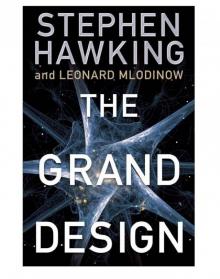 The Grand Design
The Grand Design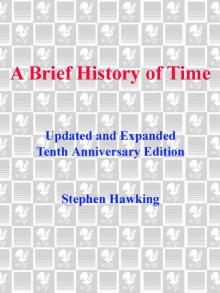 A Brief History of Time
A Brief History of Time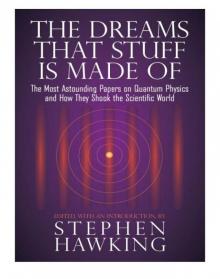 The Dreams That Stuff is Made of
The Dreams That Stuff is Made of My Brief History
My Brief History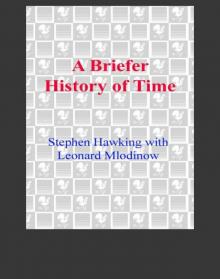 A Briefer History of Time
A Briefer History of Time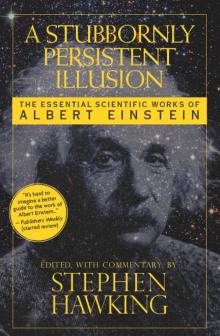 A Stubbornly Persistent Illusion
A Stubbornly Persistent Illusion George and the Blue Moon
George and the Blue Moon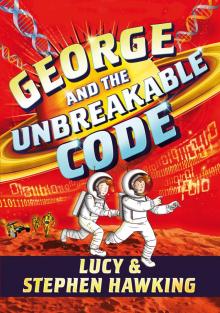 George and the Unbreakable Code
George and the Unbreakable Code Brief Answers to the Big Questions
Brief Answers to the Big Questions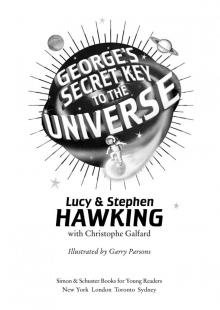 George's Secret Key to the Universe
George's Secret Key to the Universe